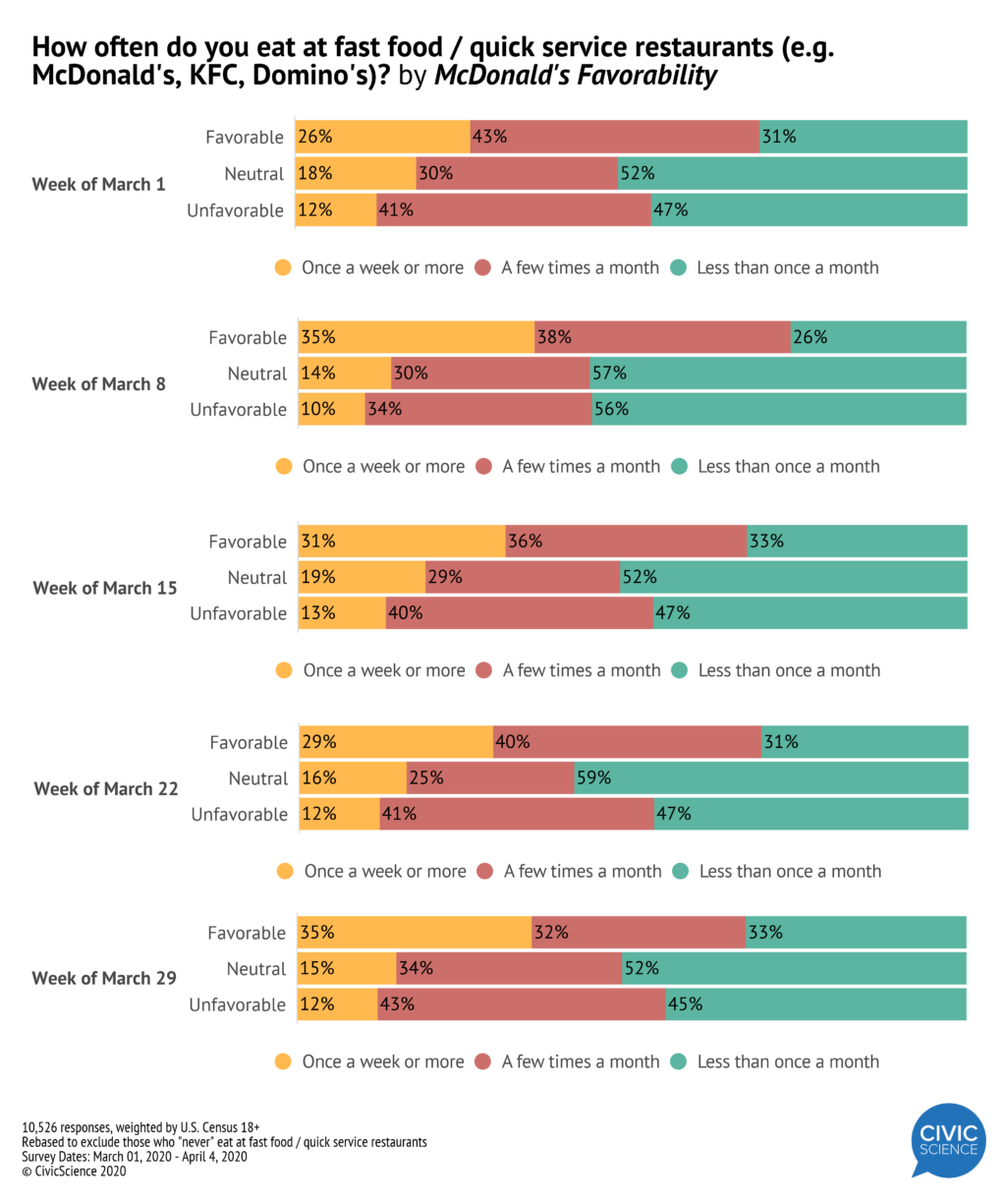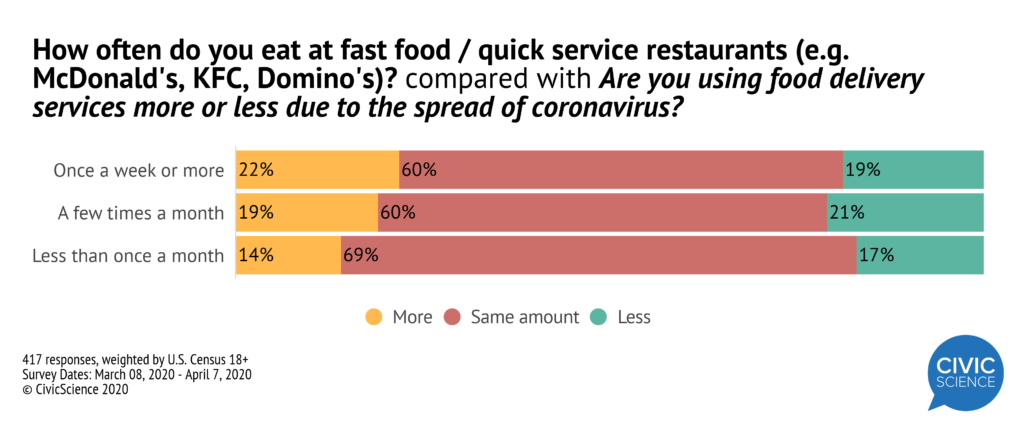Many popular fast food chains closed their dining areas and switched to drive-thru only to fight the spread of the coronavirus. Consumers in turn have had to change how they typically buy meals and food in order to adapt to new levels of demand and access.
In the last 30 days, trips to fast food chains fluctuated week-over-week. The number of frequent diners (once a week or more) began to drop in the middle of March, only to rise to a new height of nearly 30% at the beginning of April. While the week of April 5th is only a few days in, the data indicate a trend that could surely stick. During the same time period, those eating fast food less than once a month rose slightly before starting a downward trajectory simultaneously with the rise of at-least-weekly diners.
During the same time period, those eating fast food less than once a month rose slightly before starting a downward trajectory simultaneously with the rise of at-least-weekly diners.
A look at week-over-week favorability for major fast food chains shows the number of McDonald’s favorables who eat fast food once a week or more increased. Favorables of Burger King and Wendy’s saw hardly any change to how often they were seeking out fast food. The aggregate percentage of brand favorables in March who were eating fast food once a week or more was highest for McDonald’s, surpassing Burger King and Wendy’s by 5 percentage points and 6 percentage points, respectively.
The aggregate percentage of brand favorables in March who were eating fast food once a week or more was highest for McDonald’s, surpassing Burger King and Wendy’s by 5 percentage points and 6 percentage points, respectively.
What is interesting is that overall favorability of Burger King saw a direct increase of 39% to 44% in the month of March. While McDonald’s overall favorability increased as well, and ultimately landed higher than Burger King’s, the weekly ratings saw more ups and downs.
Wendy’s clocked in the highest overall favorable ratings for the month of March, 56%, and didn’t see very drastic peaks and valleys week-to-week. But when crossed with how often people were visiting fast food establishments, Wendy’s favorables weren’t seeking out a sandwich and fries any more than usual.
As people adjust to changes in demand and access to food, they are still trying to stick to their preferences. For example, heavy fast food eaters have the greatest percentage of people who said they used food delivery services more in the last 30 days. On the other hand, infrequent fast food eaters (less than once a month) report the greatest levels of online grocery shopping in the last month. As the coronavirus continues to run its course, Americans will begin to settle into their new normals – if a Whopper is what you want for lunch, chances are you’ll risk the drive through or have it delivered. If you want to make your own Whopper at home, you’ll jump online to put ground beef and condiments into your cart.
As the coronavirus continues to run its course, Americans will begin to settle into their new normals – if a Whopper is what you want for lunch, chances are you’ll risk the drive through or have it delivered. If you want to make your own Whopper at home, you’ll jump online to put ground beef and condiments into your cart.
At a time when things are changing astronomically, CivicScience will continue to report on what it sees in the data.








